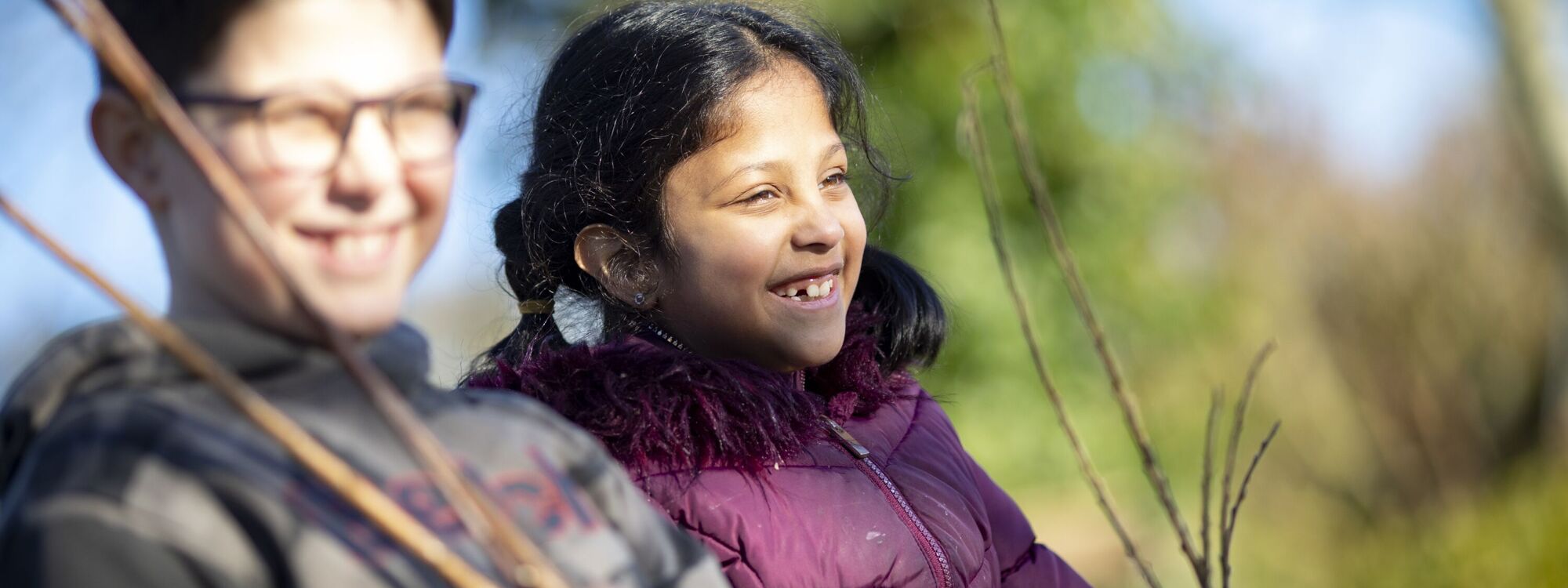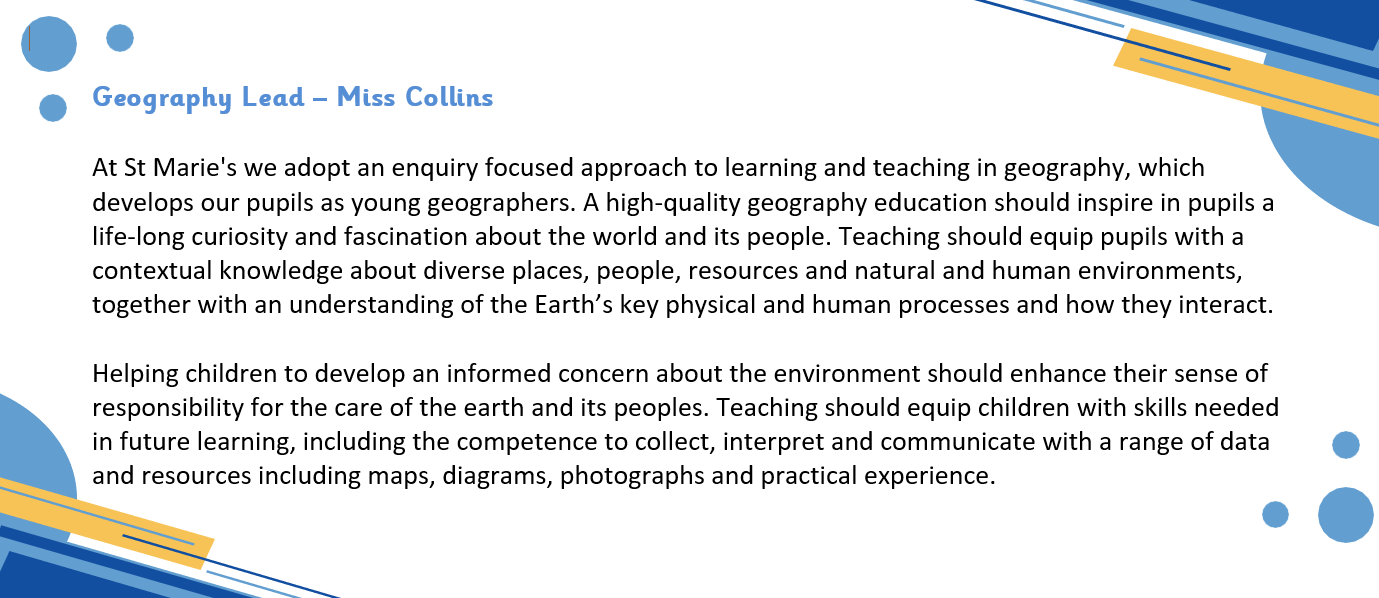
- Home
- Curriculum
- Subject Information
- Geography
Geography

Intent
At St Marie's we follow the National Curriculum. Staff have collaborated to build a bespoke and engaging curriculum where Geography works alongside History in our Humanities curriculum to provide a basis for themed work.
At Foundation Stage: raise awareness of the local environment and use appropriate vocabulary to describe observations and express opinions; and raise awareness of other environments through stories, visits, photographs, ICT and artefacts.
At Key Stage 1: develop geographical skills through fieldwork, observations and a range of maps; describe and compare places near and far using geographical vocabulary; appreciate both the human and physical characteristics of places; and evaluate man-made changes to the environment.
At Key Stage 2: extend the depth of geographical enquiry and broaden the range of study to other areas of the developed and developing world; increase their awareness of physical and human factors which determine the nature of places and to describe and explain their similarities and differences; research local, national and global issues and form opinions for debate; and develop an awareness of their responsibilities as Global Citizens.
Implementation
Foundation Stage Foundation Stage planning for Knowledge and Understanding of the World shows how we engage Reception children in early geographical learning experiences, linked to celebrations, Spain and castles
In Key Stages 1 and 2, teaching incorporates the 4 strands of Location Knowledge, Place Knowledge, Human and Physical Geography, and Geographical Skills and Fieldwork. Content is delivered through the context of real places both local and worldwide e.g. Norway, India and Japan in Y2, Italy in Y3, Mexico and Brazil in Y4, a series of world-wide biomes in Y5 and Canada in Y6. Information should include photos/ videos/ data about real places, to engage children. Tasks should be challenging, varied and engaging.
Key Stage 1: Pupils learn about their locality, the United Kingdom and the world. They should understand basic vocabulary relating to human and physical geography, and begin to use geographical skills, including first-hand observation, simple fieldwork and map work, to enhance their locational awareness.
Key stage 2: Pupils extend their skills, knowledge and understanding to include physical and human characteristics of the United Kingdom, Europe, and North and South America. This includes the location and characteristics of a range of significant human and physical features. Skills include interpreting maps of different scales and types (e.g. land use/ biome), 4 and 6-figure grid references and field work investigations of the local area.
What a typical lesson looks like:
Flashback: children retrieve and build upon previously acquired skills.
Teach it: live modelling of new learning, addressing potential misconceptions.
Practise it: children practise new skills independently or with others.
Prove it: children apply new knowledge and skills independently. They might explain ideas, find or choose information, interpret or investigate problems, evaluate and justify data, or illustrate examples.
Dig deeper: teachers take stock of what has been learned; children reflect and focus on a specific aspect or question, linked to the learning objective.
Our Geography curriculum is sequenced to ensure that pupils can build on previous knowledge and understanding as they tackle more complex and demanding enquiries. Learning activities are varied, including the use of maps, geographical puzzles, photographs and drama. Similarly, we provide varied and differentiated ways for pupils to record the outcomes of their work including the use of PowerPoint, concept mapping, annotated diagrams, graphs and the application of a wide range of writing genres, including the use of technology for vlogs. Flashback activities are used at the beginning of lessons to recap on previously learnt facts. In this way knowledge becomes embedded and ‘sticky’ and ensures that our pupils can build on what they know and understand from one year to the next.
Impact
How learning is captured: Independent/ group tasks are devised to enable children to demonstrate their understanding and to practise skills such as using direction, collecting/ comparing information or data. Formative assessment opportunities include “thought bubble” questions, low risk quizzes and interpreting data/ photo/ map resources. Bromcom summative assessments are completed 3 x per year.
Assessment
Termly data drop on Bromcom is informed by on-going formative assessments within every lesson through questioning, live marking with instant feedback, quizzes, and end of unit assessments as required.
Monitoring, Evaluation and Review
St Marie’s implement a systematic approach to Monitoring, Evaluation and Review in Geography which comprises of the following:
- Learning walks and informal lesson observations
- Book trawls
- Pupil interviews
- Data analysis and pupil progress meetings